Agave americana
Century Plant, American Agave
Select and plant this Agave after some consideration. The small size at planting time can become a towering, wide-spreading plant. Locate well away from paths and entries. 'Marginata' features leaves with distinctive cream to yellow margins. 'Mediopicta Alba' leaves have a cream to white center stripe. (See photos.) Produces prolific offsets to replace plants that will die after flowering. Canopy coverage: 113 square feet.
[Read More]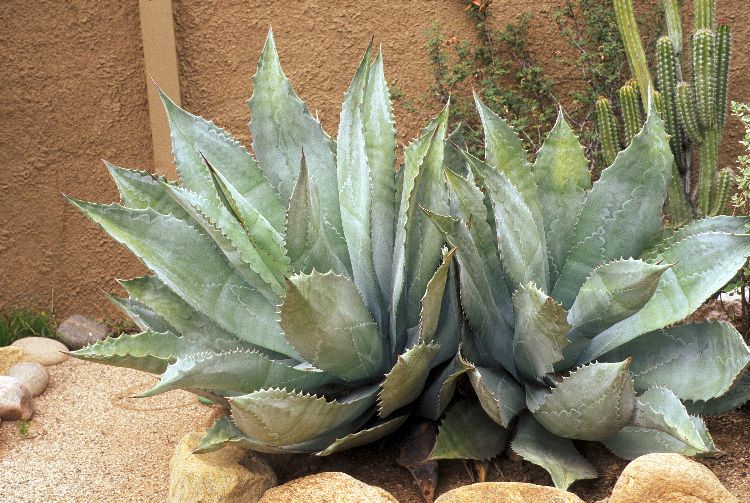
Agave colorata
Mescal Ceniza
The size of this Agave is somewhat large but at 3 feet high and as wide it is more in scale with home use than Century Plant. Markings embossed on the broad leaves add interest. Canopy coverage: 13 square feet.
[Read More]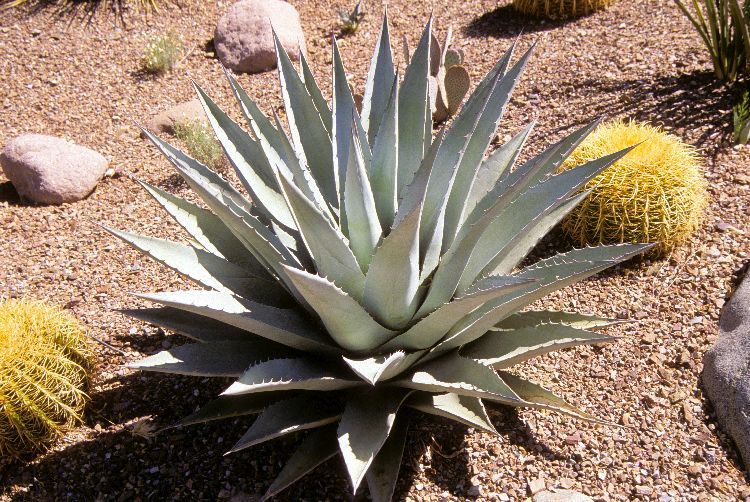
Agave desertii
Desert Agave
Desert Agave is considered the toughest Agave for its ability to grow in the hottest and most arid conditions. Plants die after blooming but plantings may continue with offsets. Flower stalk is tall and slender, reaching 5 to 15 feet high. Canopy coverage: 3 square feet.
[Read More]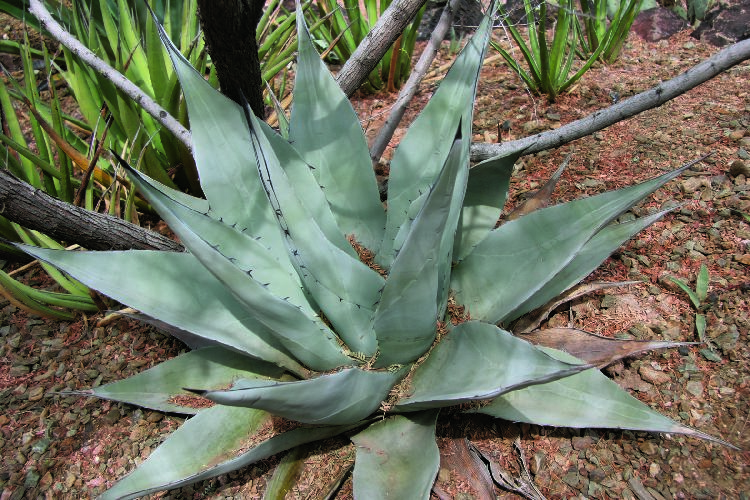
Agave havardiana
Havard Agave
The form of Havard Agave is a symmetrical, tight rosette. In hot desert regions it grows better with some afternoon shade. Canopy coverage: 7 square feet.
[Read More]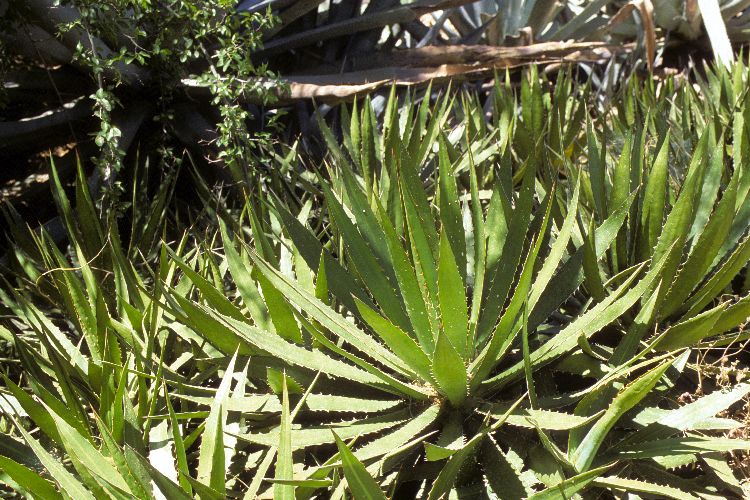
Agave lophantha
Thorn-Crested Agave, Holly Agave
This is a cluster-forming Agave that has a pleasing symmetrical growth habit. The leaves with toothed margins have a distinctive, light-colored stripe down the center. Canopy coverage: 20 square feet.
[Read More]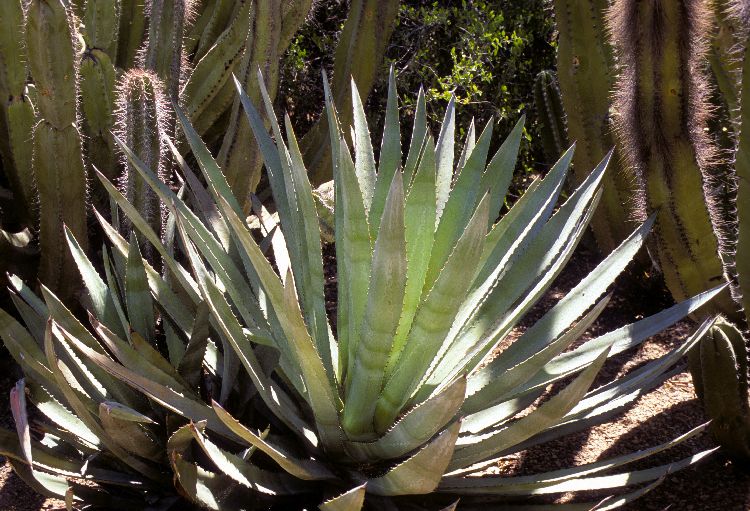
Agave murpheyi
Murphey’s Agave
Murphey’s Agave provides the same appearance and landscape use as Century Plant, but its smaller mature size is easier to manage and more versatile. With all Agaves, plants typically die after blooming. Canopy coverage: 7 square feet.
[Read More]Agave ocahui
Ocahui
A compact Agave with numerous, short, swordlike leaves, armed with a flexible but sharp spine at the leaf tips. Small stature make them a good choice for containers. Flowers bloom on a tall, 10-foot-high stalk. Leaf margins are reddish brown and can be detached from dried leaves. Canopy coverage: 7 square feet.
[Read More]Agave ovatifolia
Whale's Tongue Agave
Typically has striking bluish leaf color but can be variable. Moderate mature size makes this a choice Agave. Produces a very tall flowering stalk—to 12 feet or more. Provide with afternoon shade in low desert regions. Canopy coverage: 20 square feet.
[Read More]Agave parryi
Artichoke Agave, Parry's Agave
Artichoke Agave is one of the most decorative of all Agaves. It is worth the wait it requires to grow. As with most Agaves, plants typically die after blooming. Canopy coverage: 7 square feet.
[Read More]Agave scabra
Rough-leaved Agave
This is a common Agave in its native Chihuahuan Desert. Several subspecies can also be seen in the wild. The wide, thick leaves are edged with teeth that recurve (curve back) toward the center of the plant rosette. Sharp terminal spine. The backs of leaves have a rough texture, thus its name. Canopy coverage: 13 square feet.
[Read More]Agave schidigera
Thread-leaf Agave
Requires some TLC in desert climates; avoid planting in direct sun. Interesting fibers curl along the leaf edges. The selection 'Durango Delight' (described here) is more compact and symmetrical. Canopy coverage: 7 square feet.
[Read More]Agave schidigera 'Durango Delight'
Durango Delight Agave
This selection is a popular compact and symmetrical agave, adapted to all locations in the landscape. Leaf edges are smooth but leaf tips end in a sharp spine. Fibers add interest as they curl along the leaf edges, which are edged in white. Canopy coverage: 7 square feet.
[Read More]Agave utahensis
Utah Agave
Utah Agave grows as a compact rosette. This native of Utah, Nevada, California and Arizona exists between 3,000 and 6,000 feet in its native environment. Canopy coverage: 3 square feet.
[Read More]Agave victoriae-reginae
Queen Victoria Agave
Primary attraction of this Agave is the white margins along the leaves, becoming part of the intricate leaf patterns. The result is quite a striking plant. Recommended for up-close viewing due to its small size and highly interesting features. Best with some shade in hot-summer climates. Blooms appear on tall spikes but it may be years before plants flower. Canopy coverage: 3 square feet.
[Read More]Agave weberi
Weber's Agave
The form of Weber's Agave is an open rosette. Sharp tips and large mature size requires careful placement in home landscapes, well away from entries, walkways and outdoor living areas. Canopy coverage: 20 square feet.
[Read More]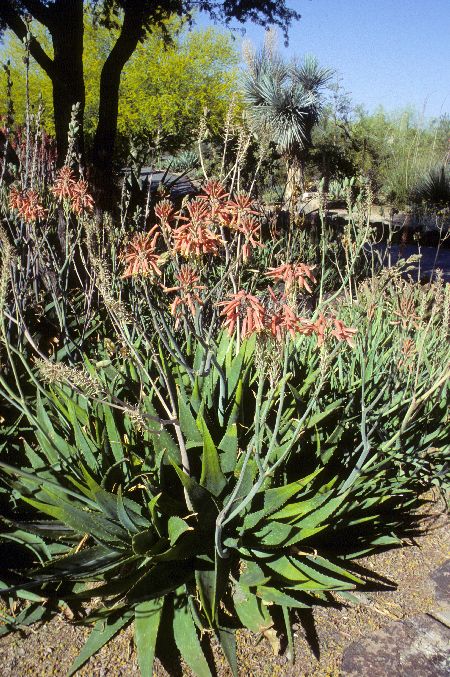
Aloe saponaria
African Aloe
Grows in a rosette that spreads rapidly, creating a clumping mound to several feet wide. Long bloom season. Sap can irritate skin—do not confuse with Aloe Vera, which is used for burns and scrapes. Canopy coverage: 79 square feet.
[Read More]Asclepias subulata
Desert Milkweed
This succulent is an accent plant that provides a vertical element in the landscape. The upright stems have a fleshy composition. Canopy coverage: 7 square feet.
[Read More]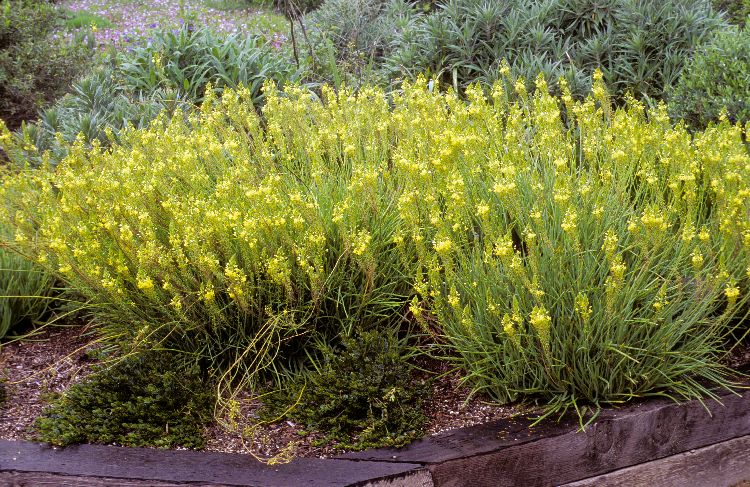
Bulbine frutescens
Yellow Bulbine
Yellow Bulbine has a clumping growth habit that can spread to become a colorful groundcover. Flowers bloom on spikes above the narrow leaves. Spreads by underground stems. Canopy coverage: 3 square feet.
[Read More]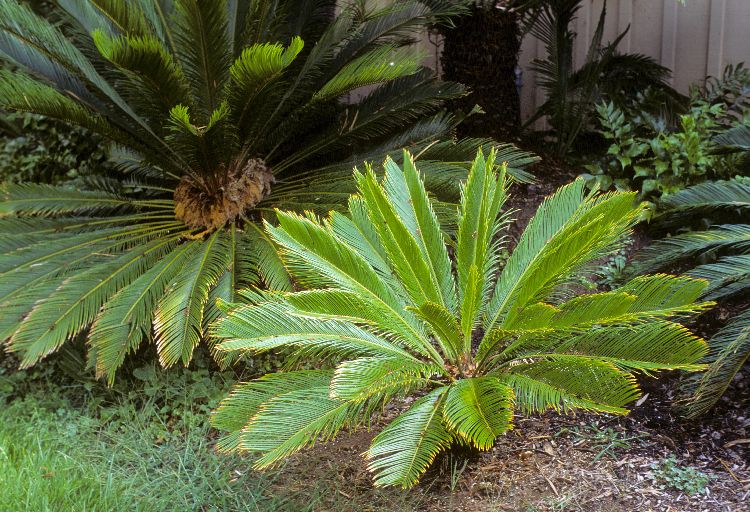
Cycas revoluta
Sago Palm
Growth rate of Sago Palm is very slow. It is an excellent plant for viewing up close, valued for its subtropical effect. Brown cones appear in spring. Provide a protected location such as a entry or patio to show it off and to avoid frost and intense sun damage. Canopy coverage: 20 square feet.
[Read More]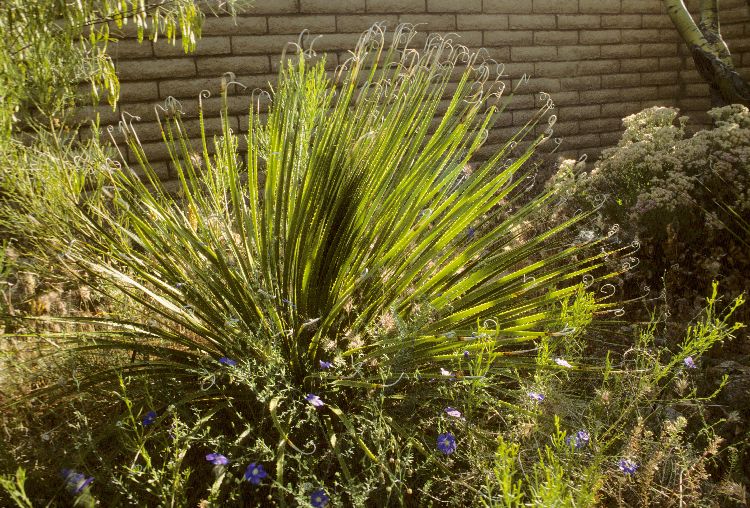
Dasylirion acrotriche
Green Desert Spoon
This quality accent plant is quite similar to Desert Spoon, only it has bright green leaves. It evokes more of a subtropical appearance. Flowers bloom on tall stalks several feet high. Leaf stalks are armed with sharp teeth so plant away from traffic areas. Canopy coverage: 20 square feet.
[Read More]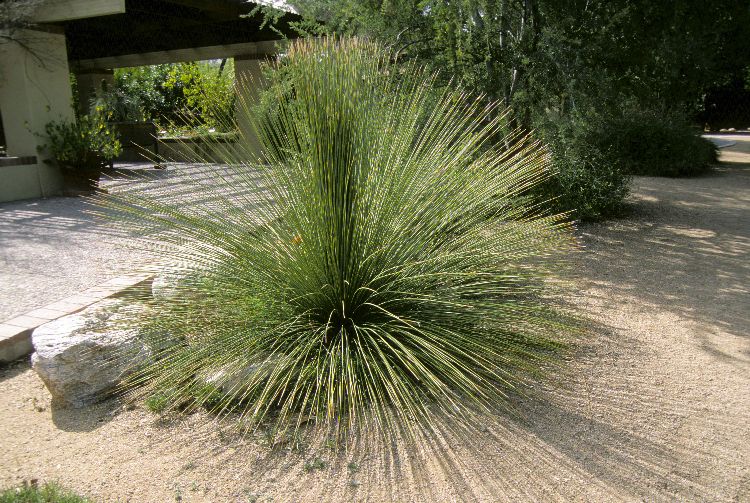
Dasylirion longissimum
Mexican Grass Tree
Consider Mexican Grass Tree a memorable accent due to its color, texture and intricate globe-shaped form. Canopy coverage: 20 square feet.
[Read More]